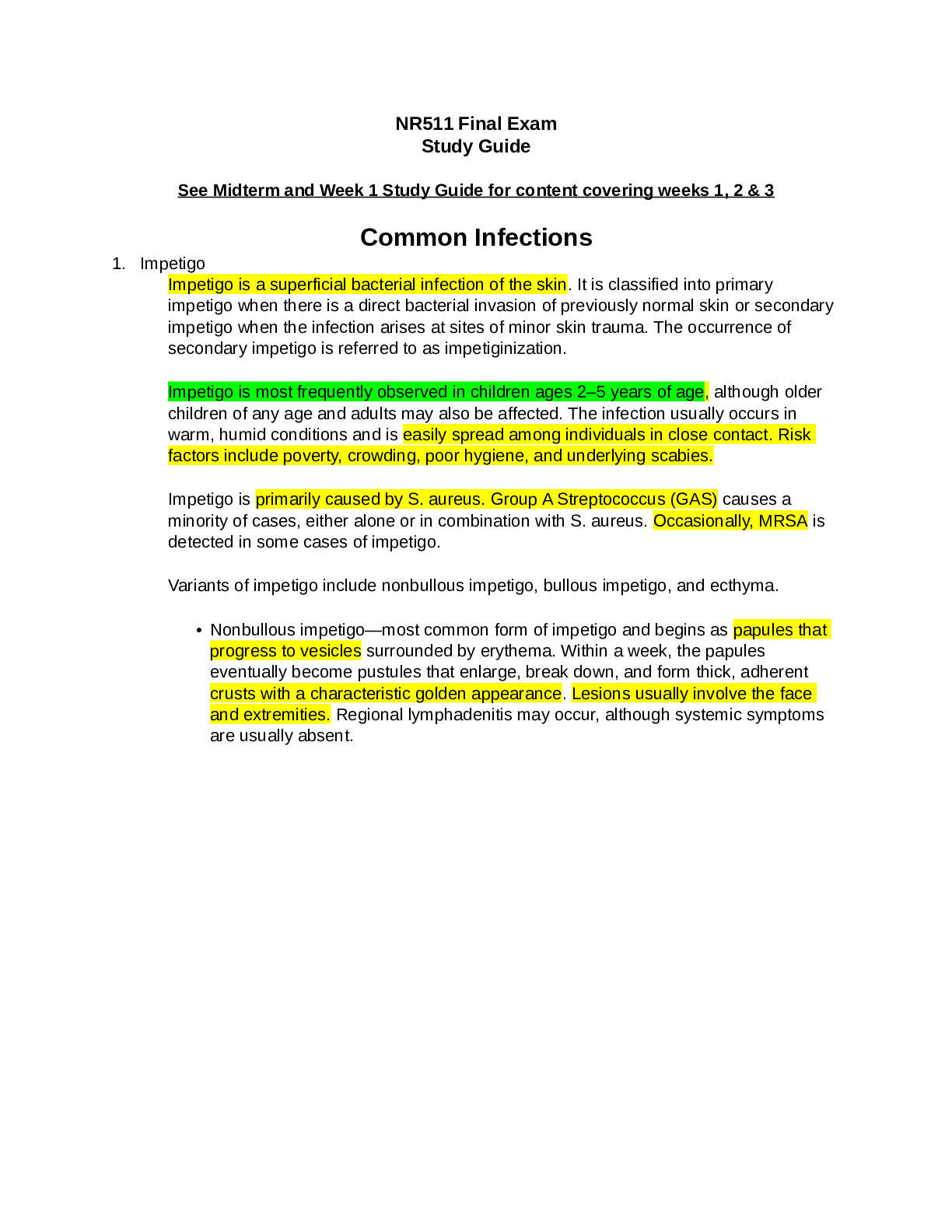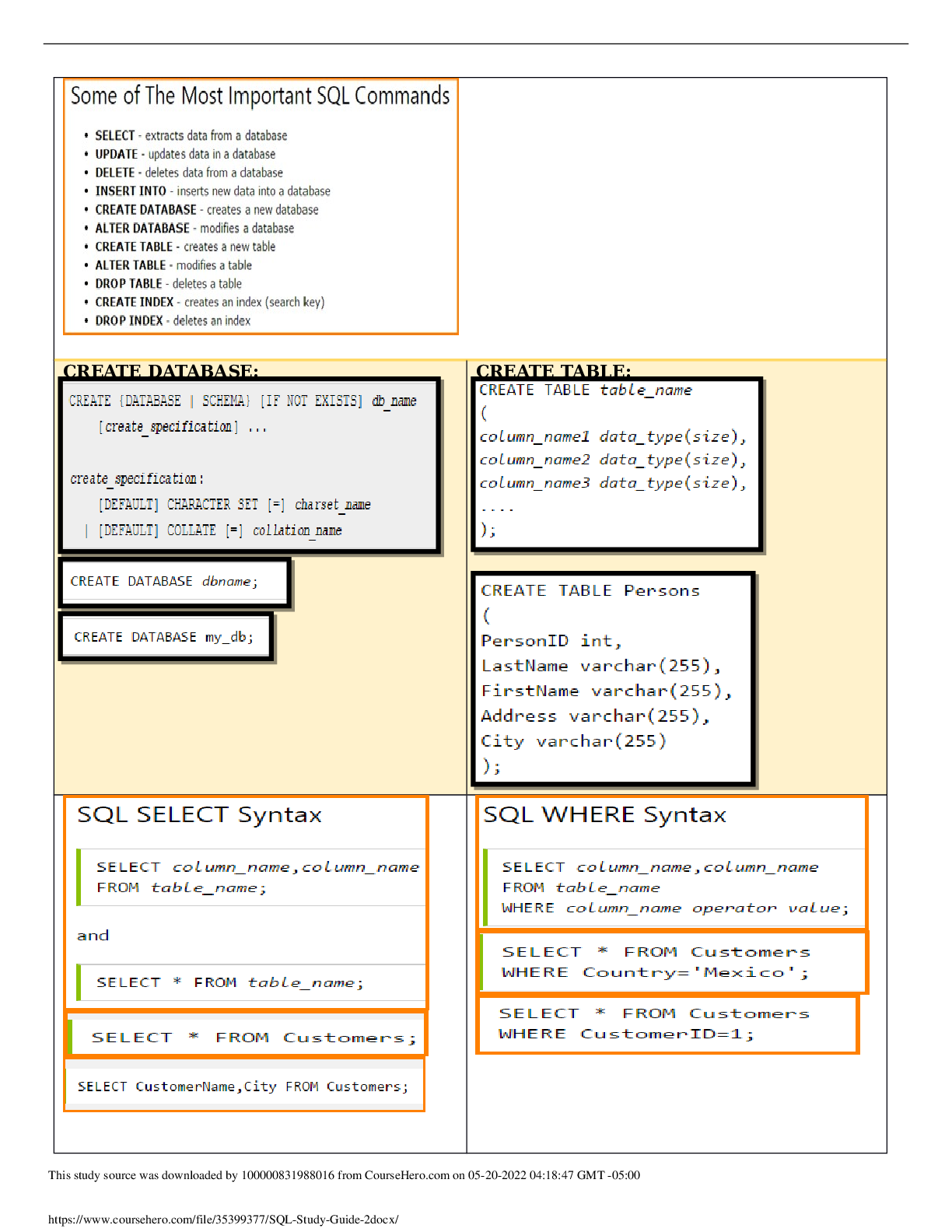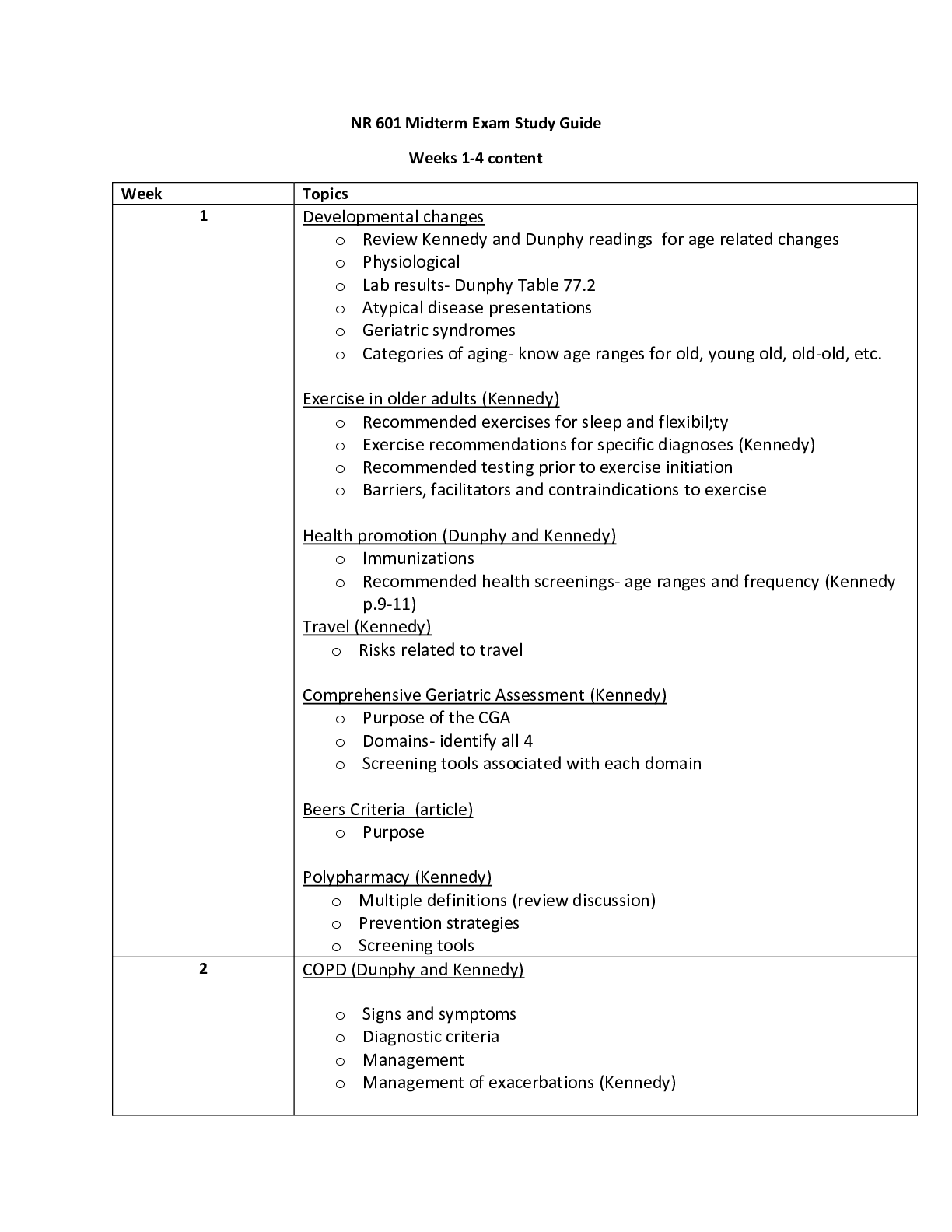*NURSING > STUDY GUIDE > NR511 Final Exam Study Guide (All)
NR511 Final Exam Study Guide
Document Content and Description Below
1. Impetigo Impetigo is a superficial bacterial infection of the skin. It is classified into primary impetigo when there is a direct bacterial invasion of previously normal skin or secondary impeti... go when the infection arises at sites of minor skin trauma. The occurrence of secondary impetigo is referred to as impetiginization. Impetigo is most frequently observed in children ages 2–5 years of age, although older children of any age and adults may also be affected. The infection usually occurs in warm, humid conditions and is easily spread among individuals in close contact. Risk factors include poverty, crowding, poor hygiene, and underlying scabies. Impetigo is primarily caused by S. aureus. Group A Streptococcus (GAS) causes a minority of cases, either alone or in combination with S. aureus. Occasionally, MRSA is detected in some cases of impetigo. Variants of impetigo include nonbullous impetigo, bullous impetigo, and ecthyma. • Nonbullous impetigo—most common form of impetigo and begins as papules that progress to vesicles surrounded by erythema. Within a week, the papules eventually become pustules that enlarge, break down, and form thick, adherent crusts with a characteristic golden appearance. Lesions usually involve the face and extremities. Regional lymphadenitis may occur, although systemic symptoms are usually absent. • Bullous impetigo—Bullous impetigo is seen primarily in young children in which the vesicles enlarge to form flaccid bullae with clear yellow fluid, which later becomes darker and ruptures, leaving a thin brown crust. The trunk is more frequently affected. Bullous impetigo in an adult with appropriate demographic risk factors should prompt an investigation for previously undiagnosed human immunodeficiency virus (HIV) infection. • Ecthyma—This form of impetigo, caused by group A, beta-hemolytic Streptococcus (Streptococcus pyogenes), consists of an ulcerative form in which the lesions extend through the epidermis and deep into the dermis. Ecthyma resembles "punched-out" ulcers covered with yellow crust surrounded by raised violaceous margins. Poststreptococcal glomerulonephritis is a serious complication of impetigo (ecthyma). This condition develops within 1–2 weeks following infection. Poststreptococcal glomerulonephritis manifests with edema, hypertension, fever, and hematuria. The diagnosis of impetigo often can be made on the basis of clinical manifestations. A Gram stain and culture of pus or exudate is recommended to identify whether S. aureus and/or a beta-hemolytic Streptococcus is the cause. However, treatment may be initiated without these studies in patients with typical clinical presentations. Bullous and nonbullous impetigo can be treated with either topical or oral therapy. Topical therapy is used for patients with limited skin involvement whereas oral therapy is recommended for patients with numerous lesions. Unlike impetigo, ecthyma should always be treated with oral therapy [Show More]
Last updated: 2 years ago
Preview 1 out of 74 pages

Buy this document to get the full access instantly
Instant Download Access after purchase
Buy NowInstant download
We Accept:

Reviews( 0 )
$13.00
Can't find what you want? Try our AI powered Search
Document information
Connected school, study & course
About the document
Uploaded On
Jun 05, 2022
Number of pages
74
Written in
Additional information
This document has been written for:
Uploaded
Jun 05, 2022
Downloads
0
Views
83


















